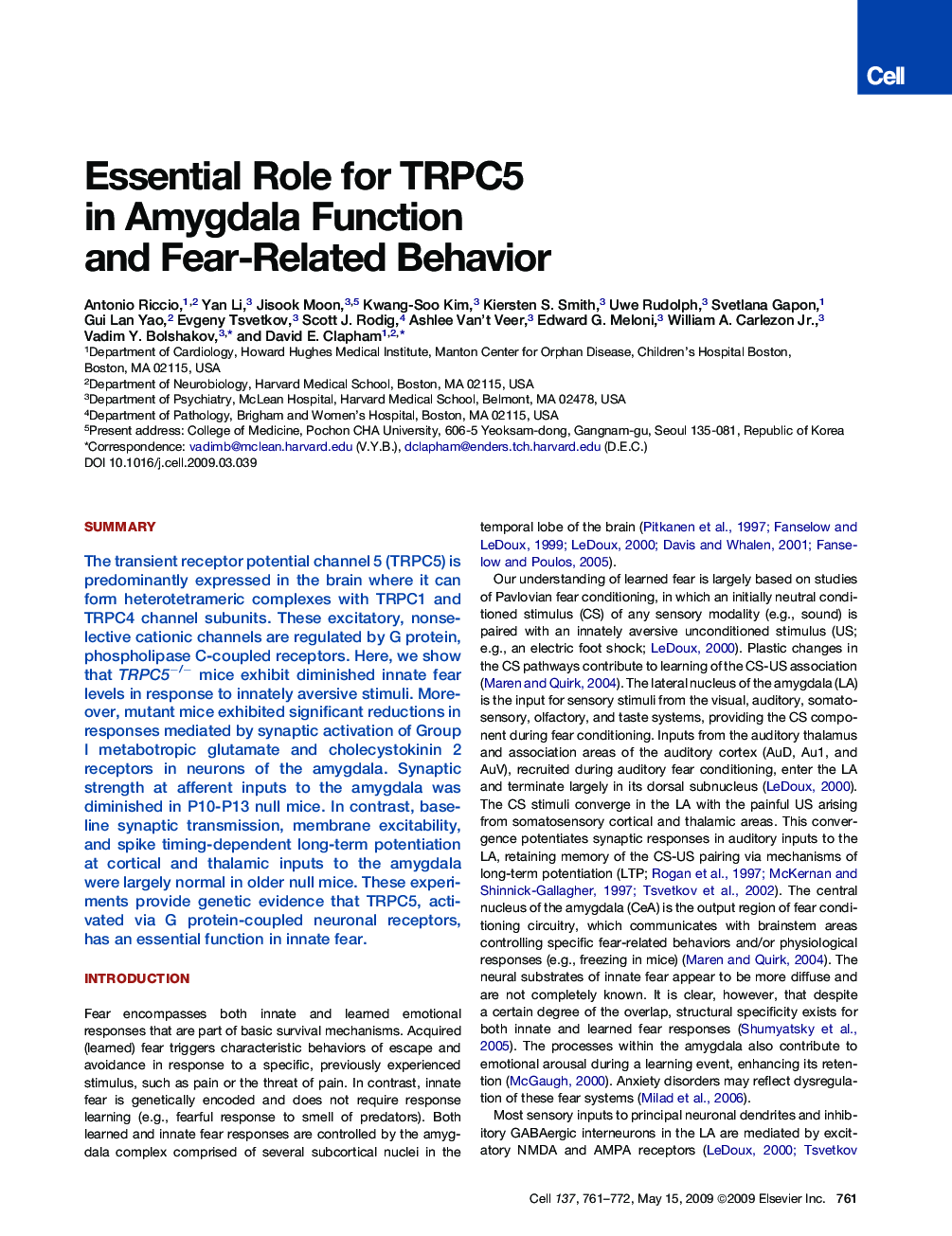| Article ID | Journal | Published Year | Pages | File Type |
|---|---|---|---|---|
| 2036730 | Cell | 2009 | 12 Pages |
SummaryThe transient receptor potential channel 5 (TRPC5) is predominantly expressed in the brain where it can form heterotetrameric complexes with TRPC1 and TRPC4 channel subunits. These excitatory, nonselective cationic channels are regulated by G protein, phospholipase C-coupled receptors. Here, we show that TRPC5−/− mice exhibit diminished innate fear levels in response to innately aversive stimuli. Moreover, mutant mice exhibited significant reductions in responses mediated by synaptic activation of Group I metabotropic glutamate and cholecystokinin 2 receptors in neurons of the amygdala. Synaptic strength at afferent inputs to the amygdala was diminished in P10-P13 null mice. In contrast, baseline synaptic transmission, membrane excitability, and spike timing-dependent long-term potentiation at cortical and thalamic inputs to the amygdala were largely normal in older null mice. These experiments provide genetic evidence that TRPC5, activated via G protein-coupled neuronal receptors, has an essential function in innate fear.
